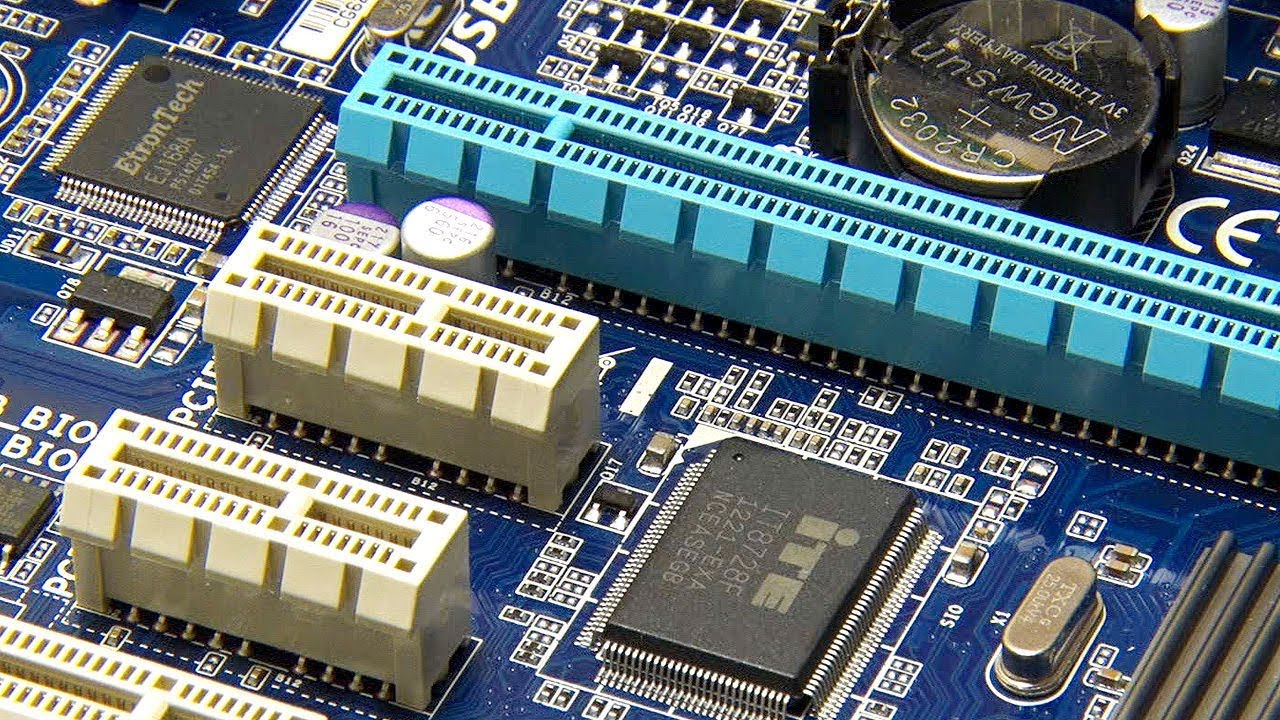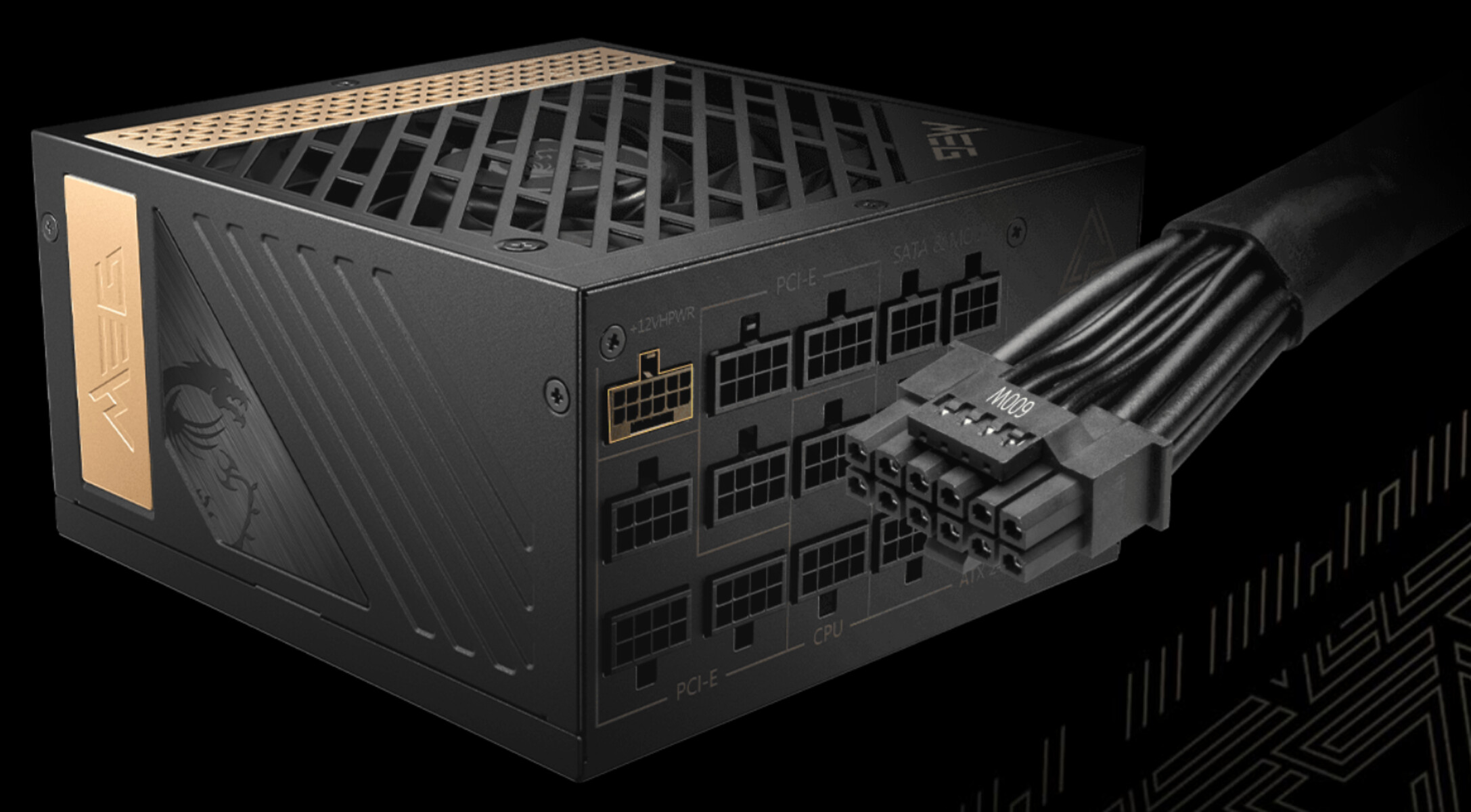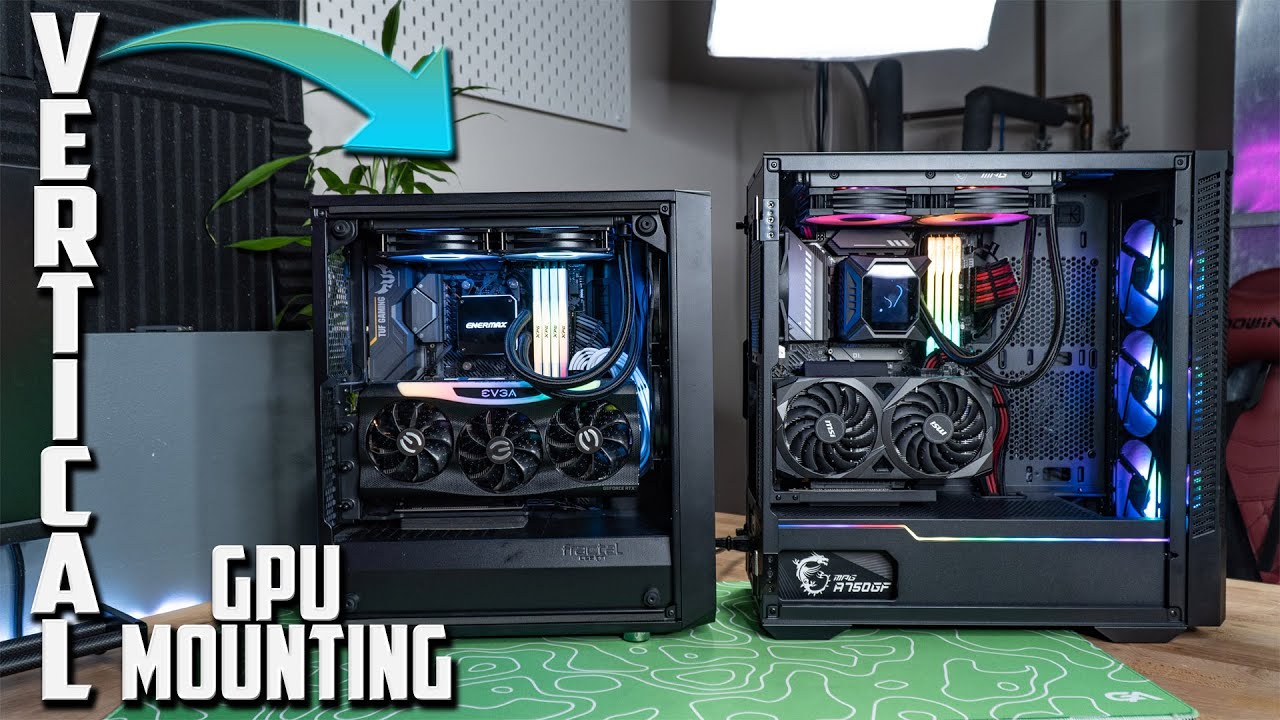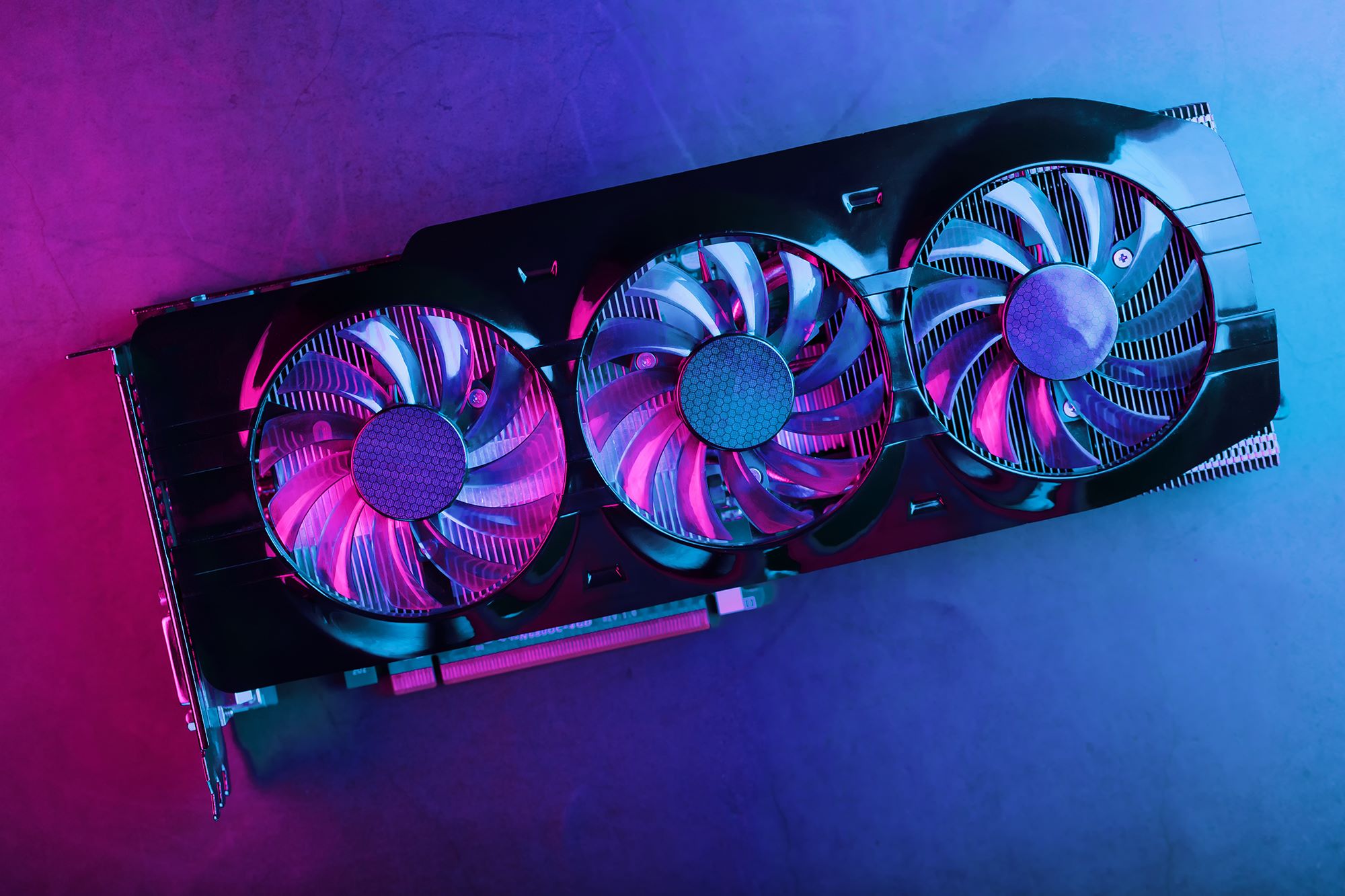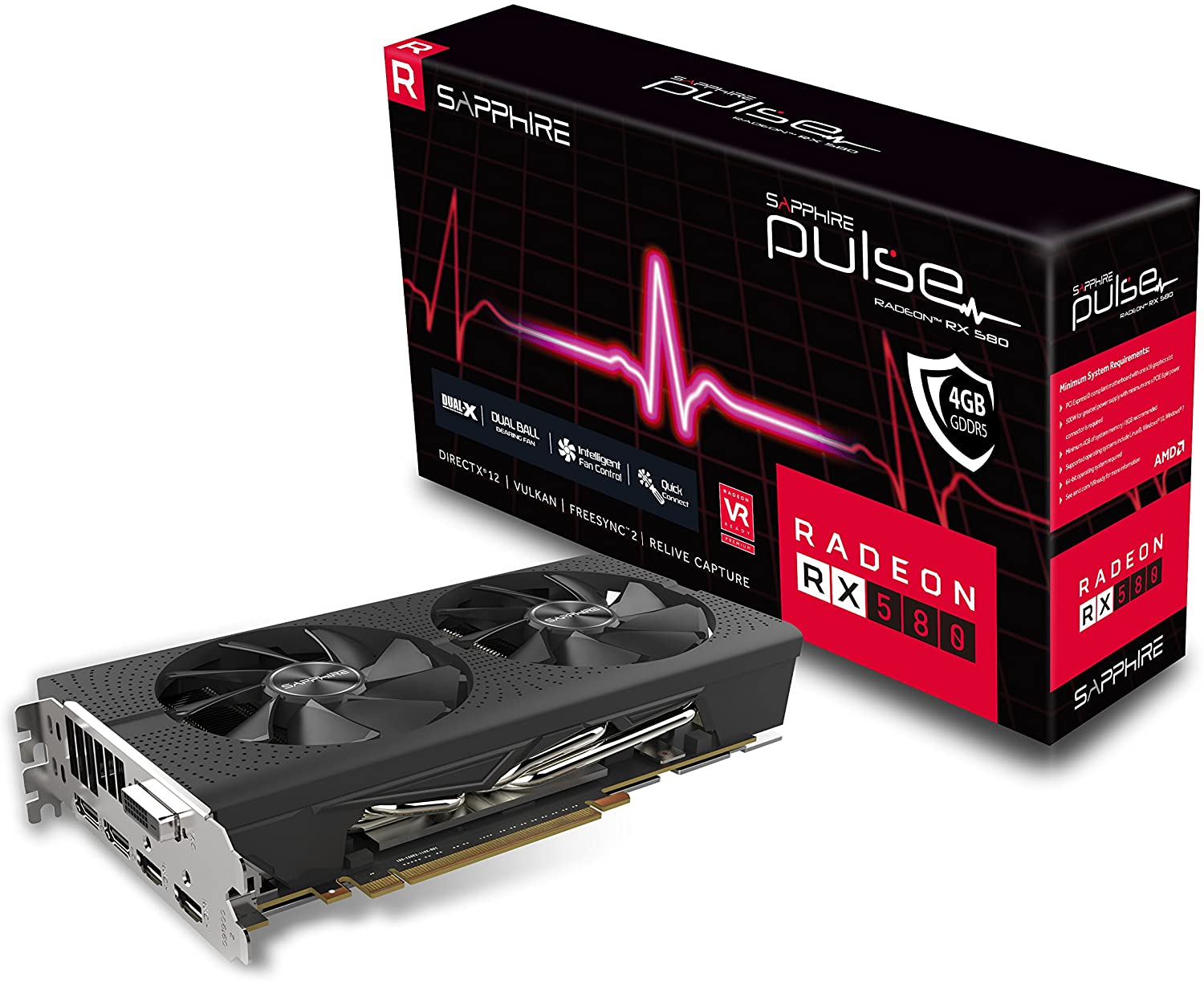Introduction
When building or upgrading a computer, one of the crucial components to consider is the graphics processing unit (GPU). The GPU is responsible for rendering visuals and processing complex graphics tasks, making it a vital component for gamers, video editors, and graphic designers. However, not all GPU slots on a motherboard are created equal.
In this article, we will explore the importance of choosing the right GPU slot and how it can affect the performance of your system. We will discuss the different types of GPU slots, the physical placement on the motherboard, as well as the factors and considerations involved in selecting the optimal slot for your GPU.
Whether you are a seasoned PC builder or a novice enthusiast, understanding the significance of the GPU slot can help you make the most out of your graphics card investment and ensure the smooth operation of your computer.
So, does it really matter what GPU slot you use? Let’s dive into the world of GPU slots and find out.
What is a GPU slot?
A GPU slot, also known as a PCI Express slot or a graphics card slot, is a specific slot on a computer’s motherboard designed to hold and connect a graphics card. It provides a direct connection between the GPU and the motherboard, allowing for efficient communication and data transfer.
The most common type of GPU slot found in modern computers is the PCI Express (PCIe) slot. PCIe slots come in various sizes, including x16, x8, x4, and x1. The “x” value represents the number of data lanes available for communication between the GPU and the system. The larger the value, the more bandwidth the slot can provide, resulting in potentially higher GPU performance.
It’s important to note that GPUs are not limited to dedicated slots on the motherboard. Some motherboards also feature built-in graphics capabilities, known as integrated graphics, which share system memory and processing power with the CPU. These integrated graphics solutions typically make use of a different type of slot, such as a PCIe x1 or a M.2 slot, or may even be soldered directly onto the motherboard.
GPU slots can vary depending on the motherboard’s form factor. Common form factors include ATX, micro-ATX, and mini-ITX. Each form factor may have different availability and arrangement of GPU slots, so it is essential to choose a motherboard that suits your specific needs.
Now that we have an understanding of what a GPU slot is, let’s explore the different types of GPU slots that exist and their physical placement on the motherboard.
Different types of GPU slots
There are several types of GPU slots available on motherboards, each with its own characteristics and capabilities. Understanding these different types can help you determine the compatibility of your graphics card and make an informed decision when selecting a GPU slot.
1. PCIe x16: The PCIe x16 slot is the most common and widely used GPU slot. It provides the maximum bandwidth and is designed to accommodate high-performance graphics cards. Most dedicated graphics cards require this type of slot for optimal performance. It offers the fastest data transfer speeds and is commonly found on gaming-oriented motherboards and higher-end consumer-grade models.
2. PCIe x8 and PCIe x4: These slots are designed to offer slightly lower bandwidth compared to the PCIe x16 slot. They are suitable for secondary or less demanding graphics cards, such as those used for additional displays or GPU acceleration. PCIe x8 and x4 slots are often found on mid-range and entry-level motherboards.
3. PCIe x1: The PCIe x1 slot is the smallest and offers the least bandwidth among the PCIe slots. It is primarily used for expansion cards like network adapters or sound cards. While not designed specifically for graphics cards, some lower-end GPUs may be compatible with these slots.
4. Other specialized slots: Some motherboards may feature unique or specific GPU slots, such as AGP (Accelerated Graphics Port) or older PCI slots. These slots are obsolete and rarely found in modern motherboards. They are not compatible with most current-generation graphics cards, limiting upgrade options.
It’s essential to ensure that your graphics card matches the type of GPU slot available on your motherboard to ensure compatibility. Additionally, graphics card manufacturers may provide adapters or riser cables to support different slot types. Be sure to check the specifications and documentation of your motherboard and graphics card for compatibility information.
With an understanding of the different types of GPU slots, let’s move on to explore the physical placement of these slots on the motherboard.
Physical placement of GPU slots on the motherboard
The physical placement of GPU slots on the motherboard can vary depending on the motherboard’s form factor and design. It’s crucial to understand the placement to ensure that your chosen slot is accessible and compatible with other components in your system.
1. Top PCIe slot: In most cases, the top PCIe slot on the motherboard is the primary slot intended for the installation of a graphics card. This slot is typically positioned closest to the CPU and is often labeled as PCIe x16. It offers the best performance and maximum compatibility with high-end graphics cards.
2. Secondary PCIe slots: Some motherboards may feature additional PCIe slots, usually positioned below the primary slot. These slots are commonly labeled as PCIe x8, PCIe x4, or PCIe x1, depending on their capabilities. They are ideal for adding multiple graphics cards for multi-GPU setups or for other expansion cards.
3. Physical spacing between slots: The spacing between PCIe slots can vary between motherboards. It’s essential to consider the physical dimensions of your graphics card and the available space on your motherboard. High-performance graphics cards often require multiple expansion slots due to their larger size and cooling requirements. Ensure that there is sufficient space between slots to accommodate the size of your graphics card.
4. Other components and connectors: The physical placement of GPU slots may be influenced by other components and connectors on the motherboard. For example, the location of RAM slots, SATA ports, M.2 slots, or CPU coolers may impact the accessibility and compatibility of certain PCIe slots. Ensure that the GPU slot you choose does not interfere with other components or connectors in your system.
5. Form factor considerations: The form factor of your motherboard, such as ATX, micro-ATX, or mini-ITX, also affects the physical placement of GPU slots. Larger form factors generally offer more PCIe slots, while smaller form factors may have limited slots due to space constraints. Consider your preferred form factor and its impact on the number and arrangement of GPU slots.
By understanding the physical placement of GPU slots on your motherboard, you can plan your system build more effectively and ensure that your chosen slot is compatible with other components and fits within the available space.
Next, let’s delve into the factors to consider when choosing a GPU slot.
Factors to consider when choosing a GPU slot
When selecting a GPU slot for your graphics card, there are several factors to consider to ensure compatibility, performance, and optimal utilization of your GPU. Let’s explore these factors in detail:
1. Compatibility with motherboard and graphics card: Ensure that the GPU slot on your motherboard is compatible with your graphics card. Check the specifications of both the motherboard and the graphics card to ensure they are compatible regarding the slot type, bandwidth, and physical dimensions. Consider the maximum supported PCIe version and the power delivery capabilities of the slot.
2. Bandwidth requirements: Different graphics cards have varying bandwidth requirements. High-end gaming or professional graphics cards generally require a PCIe x16 slot to provide maximum bandwidth. However, if you are using a lower-powered or secondary graphics card, a PCIe x8, x4, or even x1 slot may suffice. Consider your GPU’s bandwidth needs and choose the appropriate slot accordingly.
3. Number of PCIe slots: If you plan to use multiple graphics cards in a multi-GPU setup, ensure that your motherboard has enough PCIe slots to accommodate them. Some setups require specific slot configurations, such as SLI (NVIDIA) or CrossFire (AMD) support. Check the motherboard’s specifications for multi-GPU support and the recommended slot configurations for optimal performance.
4. Cooling and space requirements: High-performance graphics cards often come with large heatsinks or cooling solutions that occupy multiple PCIe slots. Consider the physical space available and the cooling requirements of your chosen graphics card. Ensure that there is sufficient space and airflow around the GPU slot to prevent overheating. Verify that the GPU slot you choose does not interfere with other components, such as CPU coolers or RAM slots.
5. Future upgrade possibilities: If you plan to upgrade your graphics card in the future, consider motherboard options that provide flexibility and support for different GPU slots. PCIe x16 slots are the most future-proof option, as they offer the most compatibility with a wide range of graphics cards. Take into account the potential for technology advancements and the lifespan of your system when selecting a GPU slot.
By considering these factors, you can choose the most suitable GPU slot that aligns with the compatibility requirements of your graphics card, satisfies bandwidth and cooling needs, and provides room for future upgrades if necessary.
Now that we have explored the factors to consider, let’s move on to understanding why it may matter which GPU slot you use.
Compatibility and performance considerations
Choosing the right GPU slot is crucial for ensuring compatibility and optimizing the performance of your graphics card. Consider the following compatibility and performance factors when selecting a GPU slot:
1. Bandwidth: GPU slots with higher bandwidth, such as PCIe x16, provide faster data transfer rates, resulting in improved performance. High-end graphics cards, especially those used for gaming or professional applications, often require a PCIe x16 slot to fully leverage their capabilities. Ensure that the selected GPU slot can meet the bandwidth requirements of your graphics card.
2. PCIe version: PCIe slots come in different versions, such as PCIe 3.0 and PCIe 4.0. Graphics cards designed for PCIe 4.0 may not reach their full potential if installed in a motherboard with only PCIe 3.0 slots. Conversely, using a PCIe 4.0 graphics card in a PCIe 3.0 slot will result in reduced bandwidth and performance. Verify the PCIe version compatibility between your motherboard and graphics card to ensure optimal performance.
3. Power delivery: Some high-performance graphics cards draw significant power to function properly. Ensure that the chosen GPU slot can deliver sufficient power to the graphics card. Some motherboards may offer additional power connectors near the GPU slots to ensure stable power supply to the graphics card, while others rely solely on the primary power connector.
4. Cooling considerations: Graphics cards generate a substantial amount of heat during operation. Selecting a GPU slot that allows for proper airflow and cooling is essential in maintaining optimal performance and preventing overheating. Make sure there is sufficient space around the GPU slot for adequate airflow and that there are no obstructions that could impede cooling, such as nearby components or cables.
5. Multi-GPU setups: If you plan to use multiple graphics cards in a multi-GPU configuration, compatibility and performance considerations become even more critical. Some motherboards may support specific multi-GPU configurations, such as SLI or CrossFire, and require specific slot placements for optimal performance. Ensure that your chosen GPU slot can accommodate the desired multi-GPU setup and that the motherboard supports it.
By taking these compatibility and performance considerations into account, you can choose a GPU slot that maximizes the performance of your graphics card and ensures smooth and efficient operation for your computing needs.
With an understanding of compatibility and performance considerations, let’s move on to discussing why it may matter which GPU slot you use.
Why it may matter which GPU slot you use
The choice of GPU slot can have a significant impact on the overall performance and compatibility of your graphics card. Here are several reasons why it may matter which GPU slot you use:
1. Performance optimization: Different GPU slots offer varying bandwidth and power delivery capabilities. Using a higher bandwidth slot, such as a PCIe x16 slot, can provide maximum data transfer speeds, allowing your graphics card to perform at its best. Utilizing the optimal GPU slot ensures that your graphics card can deliver its full potential and handle demanding tasks like gaming, video editing, or 3D rendering with higher performance and smoother operation.
2. Compatibility with other components: The selection of the GPU slot must consider other components in your system, such as CPU coolers, RAM modules, and expansion cards. Larger graphics cards may require more space, occupying multiple PCIe slots. Choosing the appropriate GPU slot ensures compatibility and prevents any physical interference or limitations imposed by the arrangement of other components on the motherboard.
3. Multi-GPU support: If you intend to use multiple graphics cards in a multi-GPU setup, the selection of GPU slots becomes even more critical. Some motherboards require specific slot configurations, such as SLI (NVIDIA) or CrossFire (AMD), to enable efficient communication and synchronization between the graphics cards. By using the recommended GPU slots for your multi-GPU setup, you can ensure optimal performance and scaling in tasks that benefit from multi-GPU processing, such as high-resolution gaming or GPU accelerated computing.
4. Future upgrade possibilities: Choosing the right GPU slot also considers future upgrade potential. PCIe x16 slots are the most common and widely supported type, ensuring compatibility with future graphics cards. By selecting a motherboard with multiple PCIe x16 slots, you provide flexibility for future upgrades, allowing you to easily swap or add graphics cards without the need for extensive hardware changes.
5. Cooling and thermal management: The location and spacing of GPU slots can affect the cooling of your graphics card. Optimal airflow and effective cooling are vital for maintaining stable temperatures and preventing thermal throttling, which can negatively impact performance. Choosing a GPU slot that allows for adequate airflow and cooling can help ensure that your graphics card operates within safe temperature ranges, maximizing its performance and longevity.
In summary, the choice of GPU slot is essential for optimizing performance, ensuring compatibility with other components, supporting multi-GPU setups, enabling future upgrades, and maintaining proper cooling. By carefully considering these factors and selecting the right GPU slot, you can make the most out of your graphics card and enhance your overall computing experience.
Conclusion
Choosing the right GPU slot is a crucial consideration when building or upgrading your computer. The GPU slot plays a significant role in determining the performance, compatibility, and future upgrade possibilities of your graphics card.
Throughout this article, we have explored the importance of selecting the appropriate GPU slot and understanding its impact on your system. We discussed the various types of GPU slots, the physical placement on the motherboard, factors to consider when choosing a GPU slot, and the compatibility and performance considerations involved.
By carefully considering these factors, you can ensure that your graphics card operates at its optimal performance level. Whether you are a gamer seeking smooth gameplay, a video editor requiring quick rendering times, or a graphic designer demanding accurate visual representation, selecting the right GPU slot is crucial.
Remember that different GPU slots offer varying bandwidth, power delivery, and cooling capabilities. It is essential to choose a slot that suits your specific GPU’s requirements, taking into account the motherboard’s compatibility, physical limitations, and potential for future upgrades or multi-GPU configurations.
By making an informed decision and selecting the appropriate GPU slot, you can enhance the performance, compatibility, and overall experience of your computer system. So, take the time to research and consider the factors discussed in this article to ensure that you choose the best GPU slot for your needs.
Happy computing!







